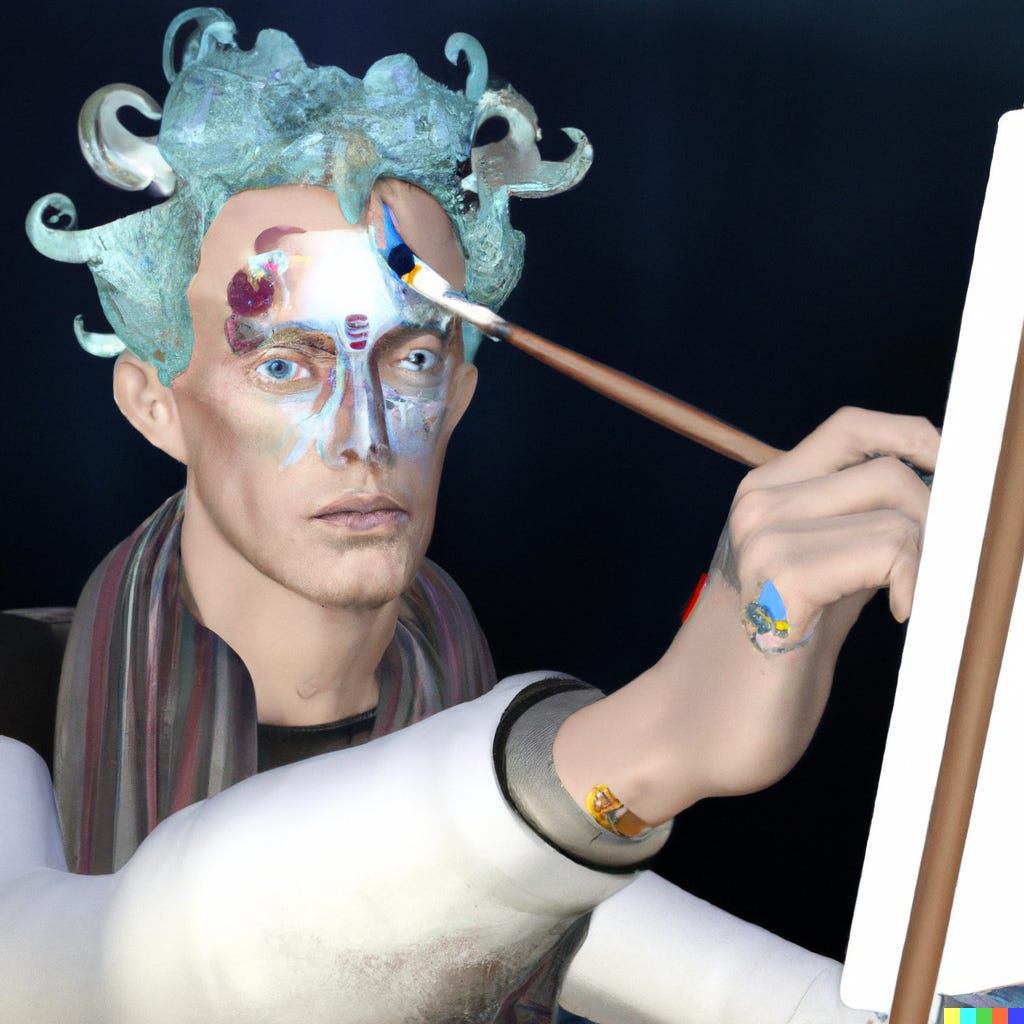Hallucinating AI in the Hands of Hallucinating Humans
Hope you read the recent article that I co-wrote with Prof. Geoff Parker: ‘How Will Generative AI Disrupt Video Platforms?’ The hypothesis is that Generative AI (potentially a combination of text-to-text and text-to-video) will lead to a new social video platform.
There are a lot of tools leveraging text-generating and image-generating AI. Rightly so, a lot of workflows can be improved using the technology. There’s a lot of discussion on whether many of those are thin wrappers on foundation models, whether there is an overabundance in some categories (e.g., copywriting, marketing), and whether the incumbents who own those workflows today could easily incorporate Generative AI. All good debates to have.
If we step away from Generative AI tools and the excitement and debate surrounding those, we can realize that there is an upheaval of social video platforms and the creator economy in sight.
From Evan Armstrong’s recent article ‘How AI Changes the Media Business’:
“AI could theoretically also generate video games and movies so tuned to the individual that it elicits near ecstasy each time you turn it on. Sequoia Capital calls this phenomena “personalized dreams” (a phrase I love), and it predicts it will happen by 2030 (a timeline that is frightening and I do not love).”
The video generation->feedback->learning loop will be quick and effective because the text prompts used to generate the videos will be used to train another AI model to determine which text prompts work best for a given objective. We describe it in our Harvard Business Review article. Here’s a diagram explaining it:
Given that we don’t have hyper-realistic, human-realistic, top production quality text-to-video AI yet, we can think of an image-based equivalent of the above social entertainment platform as a stopgap. It will work well for humor. Think of a Generative AI driven version of supermeme.ai. Instead of using pre-defined popular meme templates, we can let creators generate the images using text prompts. And make the experience full-screen, carousel-based – standard in social media apps such as TikTok. Instead of a tool to create memes, think of it as a two-sided market for the creation and consumption of memes (hat tip to 9GAG). The purpose of this stopgap wouldn’t be to compete with 9GAG, Memes.com, or iFunny. It’ll be just to have the technology and business plumbing working and ready to incorporate text-to-video when it is mature enough for the new social video platform depicted in the diagram above.
There is criticism about Generative AI’s “hallucination.” Not good when you’re looking for factual information. But it could be good when you’re making art, including video. There is a hypothesis that Paleolithic cave artists intentionally used deep, dark caves because the use of fire to light up those caves reduced oxygen concentration and caused hallucinations. What about Pollock? If you give a hallucinating human a hallucinating Generative AI model that we trained on content from hallucinating humans…





